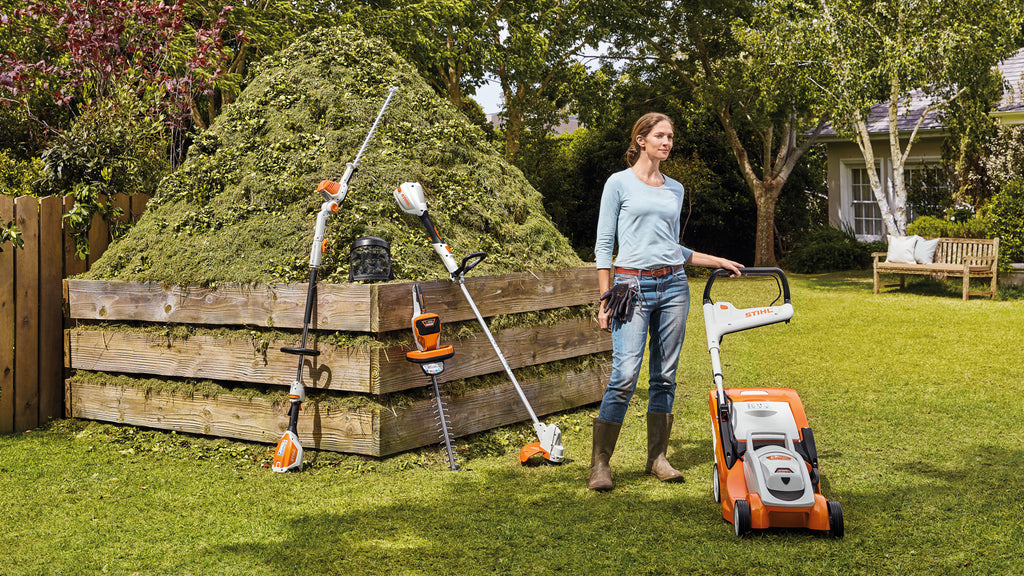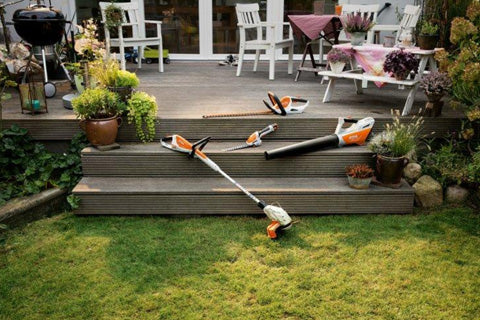About STIHL
Our commitment to quality and the environment
Since 1926, STIHL has been at the forefront of outdoor power tool development. Originally designed to service the needs of foresters, landscapers, gardeners and other busy professionals, STIHL tools are now available for demanding gardeners too.
Designed and engineered in Germany, every STIHL tool is developed for a specific purpose. Ease of use, lightweight ergonomic design and effortless power are hallmarks of STIHL and one of the reasons we’re chosen by professionals the world over.
A family business both in terms of ownership and the way we do business, STIHL is committed to the highest quality. With operations across the world and availability in over 160 counties, our mission is to delight our customers whether they’re professionals using our tools to earn a living or domestic gardeners tending to their garden tasks.
STIHL also has a firm commitment to the environment, its employees and of course our customers. STIHL tools are designed to minimise environmental impact – both in production and use and are engineered for maximum serviceability. STIHL tools can be maintained by our worldwide network of STIHL Approved Dealers and because we want you to enjoy your purchase for as long as possible, we ensure that original STIHL spares are available for a minimum of ten years after each model’s production cycle ends.
You can learn more about STIHL’s commitment to sustainability and the environment here.

STIHL Cordless Technology
Technology is at the heart of STIHL’s vast Research and Engineering function and you can be sure that we’ve done the hard work to make sure your tool is as easy to use and maintain and possible.
Quiet and simple to use with no emissions, STIHL’s cordless garden tools have to be experienced to be believed. With all the power you need to get the job done and thoughtful features to make light work of all your garden tasks, you’ll be enjoying that well-earned cuppa before you know it!
Combining over 90 years of tool design and engineering with the very latest battery technology, STIHL has a cordless tool for every job and just like your garden, the range continues to grow. To learn more about STIHL cordless technology, read here.
HISTORY OF STIHL
 1927
1927
Andreas Stihl founds an engineering office in Stuttgart. He becomes the regional representative of the Berlin-based company E. Ring & Co., manufacturer of the "Rinco" tree trimming and felling machine, and develops his own chainsaw. The production and sale of pre-combustion systems ensures financial independence. One year after founding his company, Andreas Stihl opens a factory in Bad Cannstatt, near Stuttgart.
 1928
1928
STIHL becomes a brand. The name represents the ceaseless quest of the engineer and company founder Andreas Stihl to ease the heavy labour of forestry work with his inventions.
 1930
1930
STIHL presents his portable petrol-powered chainsaw at the Leipzig trade fair – it is well received. The first exports go to Switzerland, the Netherlands, Belgium and France. STIHL enters into a business relationship with a foreign importer (Defries in Milan, Italy) for the first time.
 1934 : Apprentice Training
1934 : Apprentice Training
From the very early years STIHL believed in developing good people. STIHL trains the first apprentice mechanics. Skilled workers with outstanding qualifications form the backbone of the company, which consistently develops technical improvements and employs new models.
 1940s
1940s
Despite conscription and frequent air raids, production continues to increase. Together with other companies, STIHL is commissioned to produce the KS 43 standard chainsaw for the forestry authorities and the German Armed Forces. During the bombing of Stuttgart, the STIHL plant in Cannstatt is severely damaged. The entire production facilities are relocated to Waiblingen where it remains today.
 1954 : Diversification begins
1954 : Diversification begins
An attachment to the STIHL BL chainsaw transforms it into an earth auger.
 1959 : The Legendary STIHL Contra
1959 : The Legendary STIHL Contra
Andreas Stihl's vision is realised and the 'lightweight', portable chainsaw revolutionises the tree work industry.
 1970s
1970s
Production processes are becoming more mechanised. Hair is getting taller!
 1970s : The STIHL logo
1970s : The STIHL logo
Evolution of the STIHL logo reflects diversification of the range. Originally designed as a symbol of forest work, it is now internationally recognised as a mark of quality power tools.
 1971
1971
In order to meet the high standards of quality and reliable deliveries it demands, STIHL opens a magnesium pressure die-casting plant in Prüm-Weinsheim. The plant produces components such as crankcases for chainsaws and power tools.
 1973
1973
The company's founder, Andreas Stihl dies at the age of 76. Management passes to Hans Peter Stihl and his sister Eva Mayr-Stihl.
 1985
1985
Lumberjacks have long tested their strength with an axe and chain saw. Harnessing that competitive spirit and showcasing their skill, the STIHL® TIMBERSPORTS® Series is launched. It now has a global fan-base following events live and on TV.
 2000
2000
The century turns and STIHL launches its innovative multi-tool concept. A splitting shaft allows a whole range of tools to be powered by one engine. It is known today as the KombiSystem.
 2004
2004
STIHL opens its state-of-the-art Engineering Centre in Waiblingen, on time and on budget. The project represents a €40 million investment in STIHL's future R&D infrastructure.
 2009
2009
STIHL enters the cordless power tool market with two standard-setting new hedge trimmers. Quiet, powerful and lasting performers, the new models are praised by gardeners.
 2010
2010
A fully electronic engine management system, STIHL's M-Tronic technology makes the MS 441 C-M chainsaw its most advanced ever.The self-tuning engine makes this a chainsaw with a brain!
 2011
2011
A new era begins with the arrival of a complete range of cordless garden power tools from STIHL. A clean, quiet and long-lasting lithium-ion battery powers each of the five tools available.
